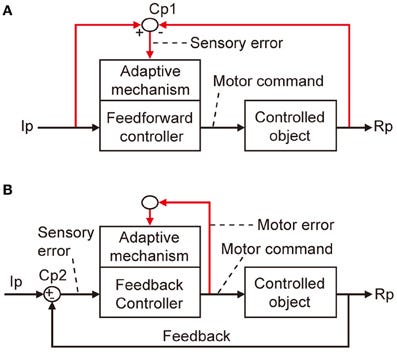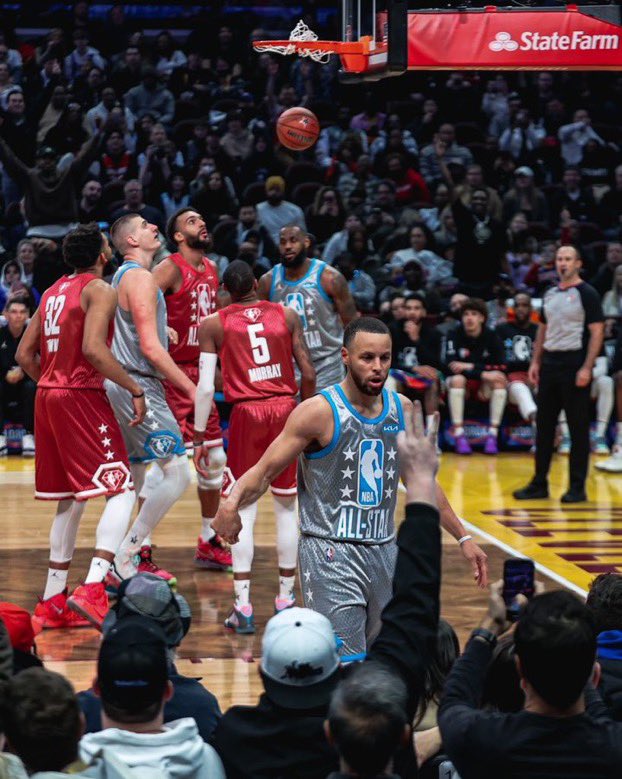Dr. Raj, DPT breaks it down from a sports science perspective
Golden State Warriors superstar Stephen Curry is inarguably the greatest shooter of all time and he’s famously now doing this no look shot where he turns his back
while the ball’s in the air knowing full well that the ball will be going in. So how does he do that?
To understand that let’s first break down what shooting is at its core.
Shooting at its core
Shooting is a target sport:
You have the individual – in this case Steph as the shooter – hurtling an object – the basketball – at a target – the basket.
That applies to multiple sports. In the NFL, it’s the quarterback throwing the ball to a receiver. In marksmanship, it’s the individual and the gun with the bullet towards a literal target. In soccer (football), it’s the kicker hitting the ball towards a target.
In all of these, there’s three key phases.
First is that initial sequence the jump shot. Then you have that period where the object is in air towards the target and then lastly you have when it reaches that target .
During each of these sequences the brain is interpreting what’s going on and trying to learn from that sequence.
Feedback and feedforward mechanisms
There’s two specific types of learning – feedback and also feed forward
Feedback is more reactive – it’s based on what’s already happened and then correcting it whereas feed forward is more of a predictive model.

The two phases that are normally most analyzed are the last phase the outcome – did the ball go in the net or, more detailed, was it short was it long was it left versus right and then picking up those patterns. All those things provide data points as feedback.
Second most analyzed point is that first phase – the shot itself. Oftentimes you’ll hear people say you know the shot felt good as it was leaving my hand and that’s because based off doing those thousands and thousands of reps again as you’ve accumulated data points and built out that database to now be able to predict what’s going to happen – feedforward.
What Steph does
However what often gets ignored is that middle phase when the ball is in the air and – Steph does this more than any other shooter that i’ve seen – is he tracks the ball with his eyes after his release and that provides even more information and data points about his overall sequence and his movement. That give him a better understanding of what works and what doesn’t. Further, the middle phase is unique in that it’s both providing feedback and feed forward because he can look at things like the trajectory the speed and also the arc of the ball and that’s going to give him feedback information. He then connects that to whether the shot went in and so he’s now then able to use those variables to predict if the shot is going in or not.
Using those thousands of reps he’s built up that database so essentially he’s using that middle phase to link everything together and that’s why for him when the shot is already in the air – even if it’s midway through – his database is so robust now and his understanding is so in-depth that he already has a very good idea if that shot is going in based on how he’s tracking the ball in midair compared to when it doesn’t go in and when it does go in.
Machine learning
Some people interpret this as almost a machine learning algorithm where you’re constantly calculating the predictive model and also the feedback model.
Other examples
You see it from other elite athletes as well. The most prominent example is PSG and Barcelona legend Leo Messi in football.
During a free kick if you watch him closely he does the same thing as Steph where he watches the ball in flight to again track those specific variables and give himself more information and data to store in that database and then be able to modulate all of his movements and following free kicks off of that.
Closing Thoughts
Generally, as a shooter or any target based athlete you’re trying to gain as much information as you can to give yourself that edge and that’s exactly what Steph is doing in this case by following the flight of the ball.
Thank you for reading and thank you for your time. As a subscriber, feel free to leave any feedback and/or suggestions for future pieces.
Dr. Rajpal Brar, DPT, (@3cbperformance) is a physiotherapist, movement expert, strength and conditioning/fitness coach, sports scientist and mindfulness coach. He runs the LA and online based physiotherapy and athletic performance clinic 3CB Performance and you can subscribe to his Youtube channel (which posts a variety of sports injury, performance, and fitness related content).
